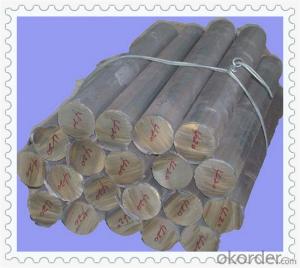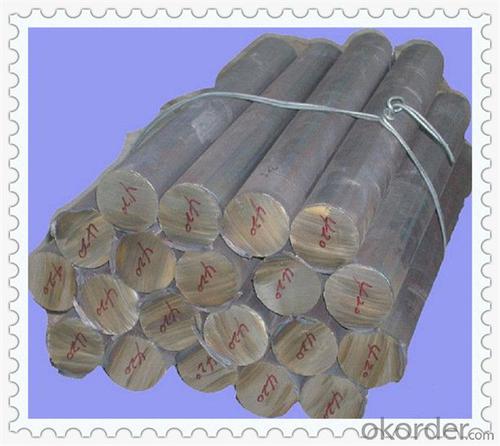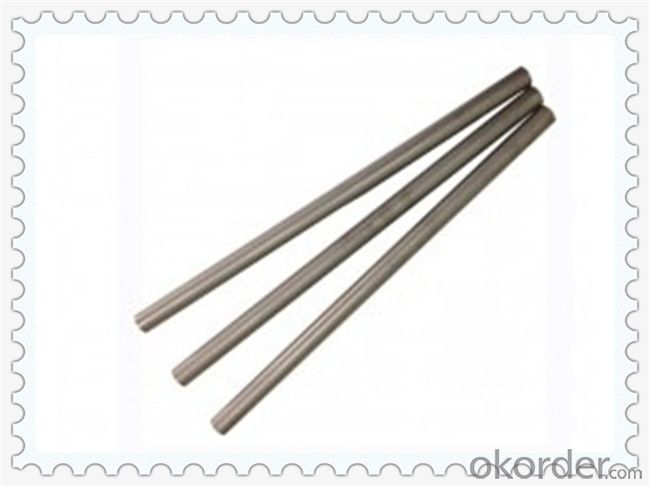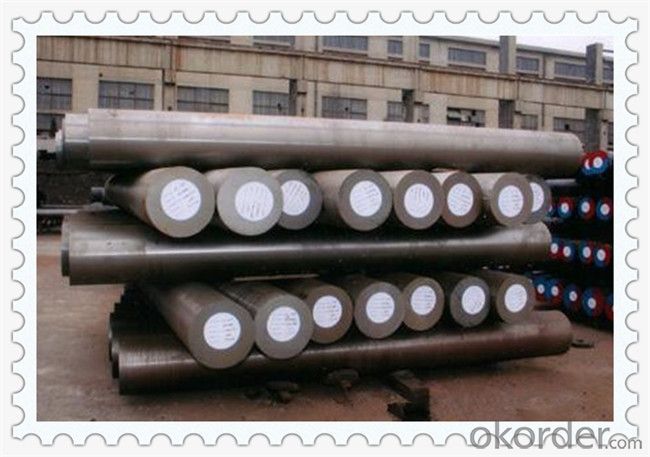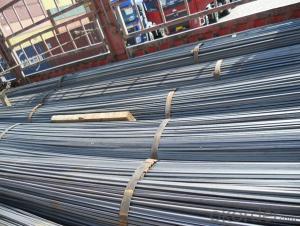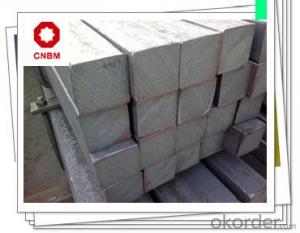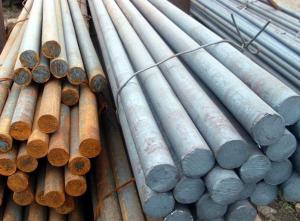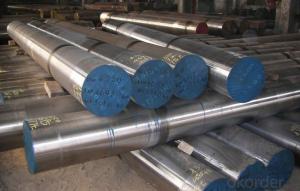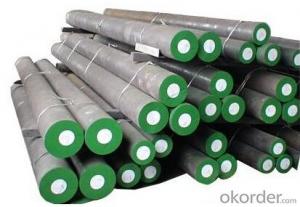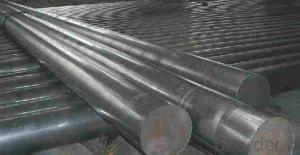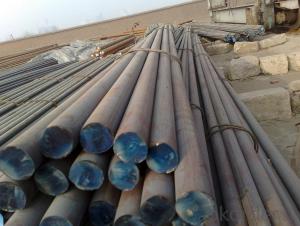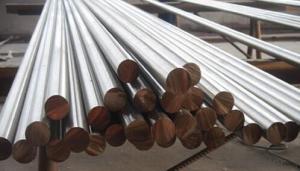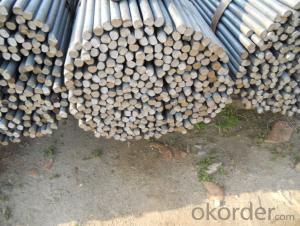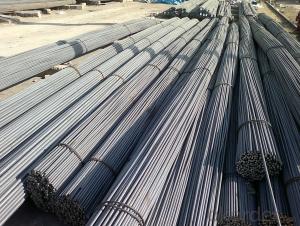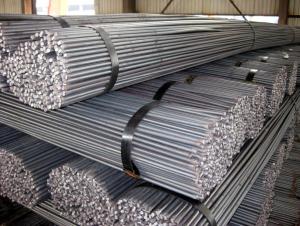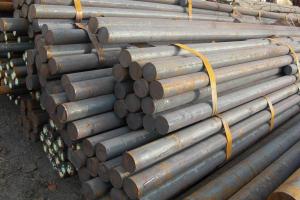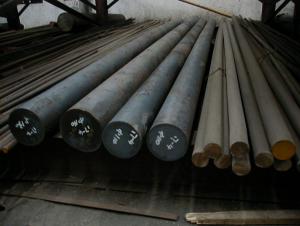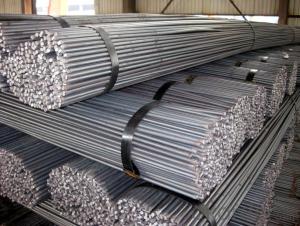20MnCr5 Alloy Steel Round Bars SAE 5152
- Loading Port:
- China main port
- Payment Terms:
- TT OR LC
- Min Order Qty:
- 30 m.t.
- Supply Capability:
- 10000 m.t./month
OKorder Service Pledge
OKorder Financial Service
You Might Also Like
20MnCr5 Alloy Steel Round Bars SAE 5152
Technical Paramenters
Chemical Composition | Mechanical Properties (In Quenched & Tempered State) | ||
C | 0.17-0.22 % | Tensile strength(MPA) | ≥1482 |
Si | ≤0.25 % | Yield strength (MPA) | ≥1232 |
Mn | 1.10-1.50 % | Elongation (δ5/%) | ≥13 |
Cr | 1.00-1.30 % | Reduction in Area (ψ/%) | ≥57 |
Ni | ≤0.30 % | Impact toughness value αkv (J/cm2) | ≥73 |
P | ≤0.035 % | Hardness | ≤357HB |
S | ≤0.035 % |
| |
Product Description
1, Diameter: 8mm-250mm rounds
5mm-9mm rods
2, Length: 2m, 3m, 5.8m, 6m or customized
3, Standard: GB, ASTM, AISI, SAE, DIN, JIS, EN
OEM technology - send detailed technical parameters for accurate quotation.
2, Produce Process: smelt iron - EAF smelt billet - ESR smelt billet -
hot rolled or forged to get the steel round bar and plate
3, Heat Treatment: annealing, normalizing, tempering, quenching
4, Surface Treatment: Black, Polished, Galvanized
5, Shape: Round, Square, Sheet, Plate, Pipe
6, Quality Assurance: We accept third party inspection for all orders.
You can ask testing organizations such as SGS, BV, etc. to test our products before shipping.
Products Show
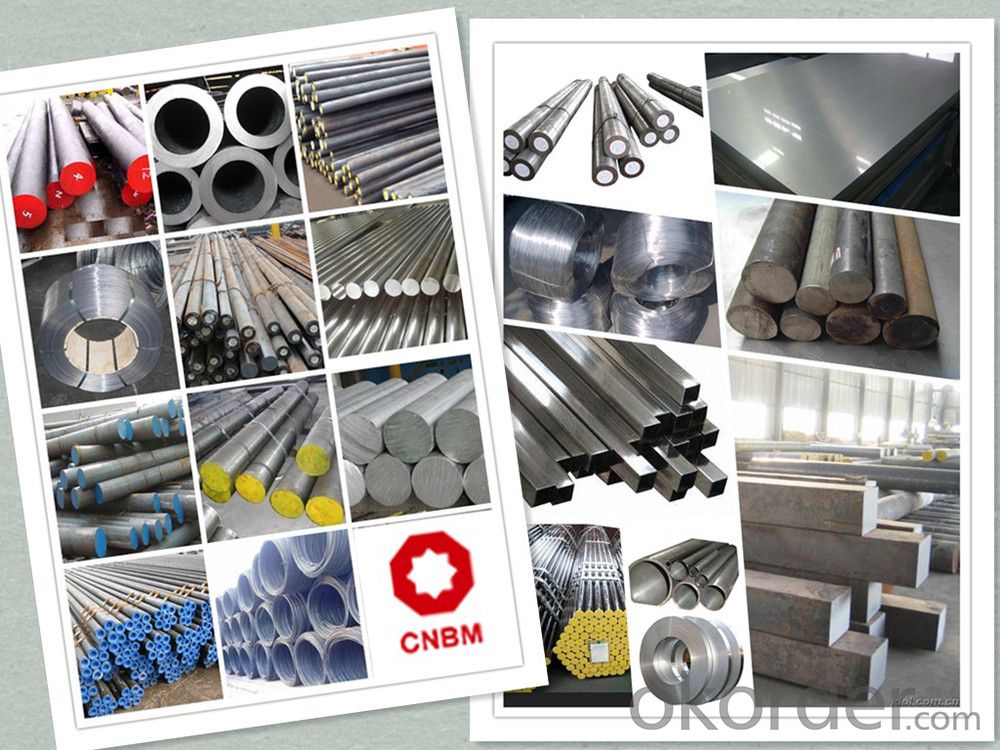
Product Overviews
| Product Name | Typical Grades | Diameter(mm) | Standard adopted |
| Carbon Steel | 20 (1020/S20C/C22) | Ø16-Ø300 |
GB/SAE/JIS/DIN
|
| 40 (1040/S40C/C40) | |||
| 45 (1045/S45C/C45) | |||
| Bearing Steel | GCr9 (51100/SUJ1) | Ø12-Ø250 | |
| GCr15 (52100/SUJ2/100Gr6) | |||
| GCr9SiMn (A485-Gr.1/SUJ3) | |||
Cr-Mo Steel | 20Cr (5120/SCr420H/20Cr4) | Ø12-Ø250 | |
| 40Cr (5140/SCr440/41Cr4) | |||
| 42CrMo(4140/SCM440/42CrMo4) | |||
| Gear Steel | 20CrNiMo | Ø16-Ø600 | |
| 20CrMn(5115/SMnC420/20MnCr5) | |||
| 20CrNiMo(8620/SNCM220/20CrMiMo2) |
Application
| Carbon Steel | Mold bottom, Plastic mold, Construction machinery parts Automobile parts, Security grills, Screens, Construction |
| Bearing Steel | Aerospace, Navigation, Nuclear energy, Chemical industry Electronic information, Petrochemical, Instrument and meter Transportation |
| Cr-Mo Steel | Mechanism & Fasteners gear, Stressed components for vehicles Engines and machines, Parts of larger cross-section |
| Gear Steel | All kinds of gears, Statically and dynamically stressed component for vehicles Engines and machine, Larger cross-section parts, Crankshafts |
Work Shop

Company Information
CNBM International Corporation is the most important trading platform of CNBM group.
Whith its advantages, CNBM International are mainly concentrate on Cement, Glass, Iron and Steel, Ceramics industries and devotes herself for supplying high qulity series of refractories as well as technical consultancies and logistics solutions.

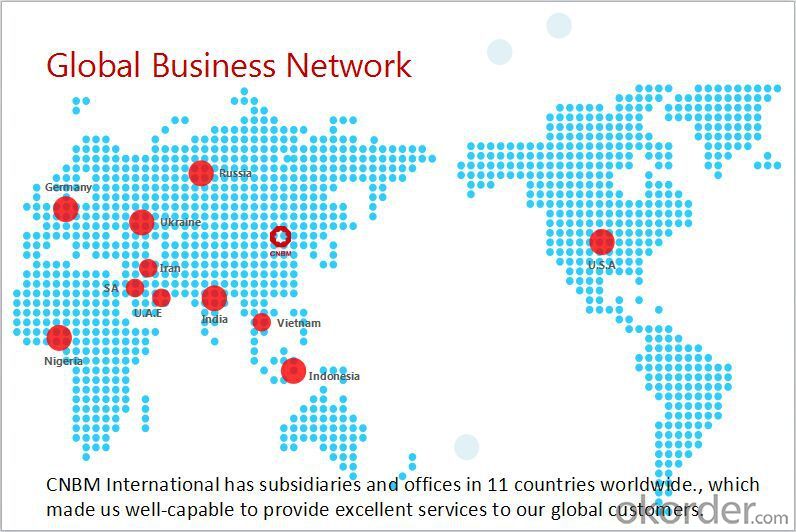
FAQ
1, Your advantages?
professional products inquiry, products knowledge train (for agents), smooth goods delivery, excellent customer solution proposale
2, Test & Certificate?
SGS test is available, customer inspection before shipping is welcome, third party inspection is no problem
3, Factory or Trading Company?
CNBM is a trading company but we have so many protocol factories and CNBM works as a trading department of these factories. Also CNBM is the holding company of many factories.
4, Payment Terms?
30% TT as deposit and 70% before delivery.
Irrevocable L/C at sight.
5, Trading Terms?
EXW, FOB, CIF, FFR, CNF
6, After-sale Service?
CNBM provides the services and support you need for every step of our cooperation. We're the business partner you can trust.
For any problem, please kindly contact us at any your convenient time.
We'll reply you in our first priority within 24 hours.
Packaging & Delivery
1, Packaging: seaworthy package or as required
2, Delivery: 35-45 days or based on quantity
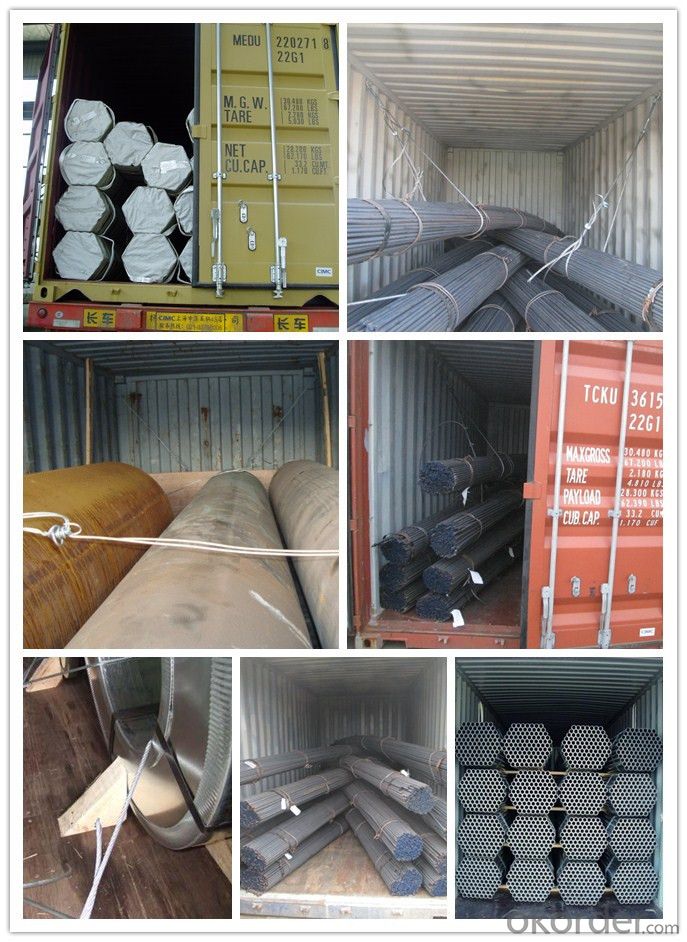
- Q: What are the different surface hardness options for steel round bars?
- Steel round bars can exhibit varying degrees of surface hardness, depending on the specific requirements and applications. There are several options available for achieving different levels of surface hardness in steel round bars: 1. Soft or annealed: At the lowest end of the surface hardness spectrum, steel is subjected to a heating and gradual cooling process to reduce internal stress and enhance ductility. Soft or annealed steel is easier to machine and shape, but it possesses lower strength and wear resistance. 2. Normalized: By heating steel to a predetermined temperature and subsequently cooling it in ambient air, the grain structure is refined, resulting in improved mechanical properties and increased hardness compared to annealed steel. 3. Quenched and tempered: This heat treatment process involves heating steel to high temperatures and quickly cooling it in a quenching medium like oil or water. The rapid cooling hardens the steel's surface, while the subsequent tempering process alleviates internal stresses and enhances toughness. Quenched and tempered steel round bars exhibit high levels of hardness and strength, making them suitable for applications requiring resistance to wear and impact. 4. Induction hardened: Through induction hardening, the surface of a steel round bar is selectively heated using an induction coil. This localized heating is followed by rapid quenching, resulting in a hardened surface layer that exhibits increased wear resistance. The core of the steel remains unaffected, retaining its toughness. 5. Case hardened: Also known as carburizing, case hardening involves introducing carbon into the surface layer of the steel round bar. This can be achieved by exposing the steel to a carbon-rich gas or heating it with a carbon-containing material. The carbon diffuses into the surface, increasing its hardness while leaving the core relatively softer. Case hardened steel round bars possess a tough core with a wear-resistant surface. These examples represent only a fraction of the available surface hardness options for steel round bars. The choice of hardness depends on specific application requirements such as required strength, wear resistance, and toughness.
- Q: What are the advantages of using shock-resistant steel round bars?
- The advantages of using shock-resistant steel round bars are that they have high strength and toughness, making them suitable for applications where there is a high risk of impact, vibrations, or sudden loadings. These bars can withstand heavy loads and absorb energy, reducing the risk of structural failure or damage. Additionally, shock-resistant steel round bars offer improved resistance to wear, corrosion, and fatigue, resulting in longer service life and reduced maintenance costs.
- Q: Are steel round bars suitable for decorative purposes?
- Yes, steel round bars can be suitable for decorative purposes. They can be used in various architectural and interior design applications to create a modern and industrial aesthetic. Steel round bars can be shaped, polished, or painted to enhance their decorative appeal and add a stylish touch to furniture, fixtures, sculptures, and other artistic creations.
- Q: Can steel round bars be used in the power generation industry?
- Indeed, the power generation industry does make use of steel round bars. These bars, known for their immense strength and durability, are frequently employed in the construction of power generation equipment and infrastructure. They are particularly valuable in the fabrication of turbine shafts, generator rotors, gears, and other components that require the ability to withstand heavy loads and resist wear and fatigue. Moreover, steel round bars can be readily machined and welded, thereby rendering them a highly versatile material for a wide range of applications in the power generation sector.
- Q: Can steel round bars be used for making brake components?
- Absolutely! When it comes to creating brake components, steel round bars are a fantastic choice. This is because steel possesses exceptional strength, durability, and heat resistance, making it a popular material in brake systems. By machining and shaping steel round bars, one can effortlessly fashion different brake components like brake discs, brake rotors, brake calipers, and brake pistons. The utilization of steel round bars guarantees that these brake components can effortlessly endure the intense pressures and temperatures produced during braking, resulting in a dependable and effective stopping ability.
- Q: What is the difference between a solid and a hollow steel round bar?
- A cylindrical bar made entirely of solid steel material is called a solid steel round bar. It is completely filled and does not have any empty spaces inside. On the other hand, a hollow steel round bar is also cylindrical but has a hollow center, meaning there is empty space or a void within the bar. The primary distinction between a solid and a hollow steel round bar is their structural composition and the roles they fulfill. A solid steel round bar is typically used in applications where strength and durability are of utmost importance. It is commonly employed in construction, manufacturing, and engineering projects that require load-bearing capacity. Conversely, a hollow steel round bar is designed to be lighter in weight while still maintaining structural integrity. The hollow center allows for weight reduction while still providing sufficient strength for various applications. Hollow steel round bars are often utilized in industries such as aerospace, automotive, and marine, where reducing weight is crucial for enhanced fuel efficiency and overall performance. Furthermore, the empty space inside a hollow steel round bar also presents an opportunity for customization. It can be utilized to house other components, such as wires or piping, enabling a more streamlined and efficient design. This versatility makes hollow steel round bars suitable for various applications that necessitate both strength and weight reduction. In conclusion, the main difference between a solid and a hollow steel round bar lies in their structural composition and the roles they fulfill. Solid steel round bars are employed in applications that demand maximum strength and durability, while hollow steel round bars offer weight reduction and customization options, making them suitable for applications that prioritize lightweight design without compromising structural integrity.
- Q: What are the different types of corrosion-resistant steel round bars?
- There are several different types of corrosion-resistant steel round bars available in the market. Some of the commonly used types include: 1. Stainless Steel Round Bars: Stainless steel is a popular choice for corrosion-resistant applications due to its high resistance to rust and corrosion. It contains chromium, which forms a protective oxide layer on the surface of the steel, preventing further corrosion. 2. Duplex Stainless Steel Round Bars: Duplex stainless steel is a type of stainless steel that contains a balanced combination of austenite and ferrite microstructures. This gives it excellent corrosion resistance, high strength, and good weldability. 3. Nitronic Stainless Steel Round Bars: Nitronic stainless steel is a high-performance alloy that offers superior corrosion resistance, high strength, and good ductility. It contains nitrogen, which enhances its resistance to pitting and crevice corrosion. 4. Alloy Steel Round Bars: Alloy steel is a type of steel that is alloyed with various elements to improve its properties. Some alloy steels, such as corrosion-resistant alloys (CRA), are specifically designed to resist corrosion in harsh environments. These alloys typically contain elements such as chromium, nickel, and molybdenum. 5. Aluminum Round Bars: While not technically steel, aluminum round bars are often used in applications where corrosion resistance is essential. Aluminum forms a protective oxide layer on its surface, which helps prevent corrosion. It is particularly suitable for applications where weight is a concern. 6. Copper-Nickel Round Bars: Copper-nickel alloys, such as Cu-Ni 90/10 and Cu-Ni 70/30, are widely used in marine and offshore applications due to their excellent resistance to seawater corrosion. These alloys have high strength, good ductility, and exceptional resistance to biofouling. These are just a few examples of the different types of corrosion-resistant steel round bars available. The choice of material depends on the specific application requirements, environmental conditions, and budget considerations. It is important to consult with a materials engineer or specialist to select the most suitable corrosion-resistant steel round bar for a particular application.
- Q: Can steel round bars be used for making tie rods?
- Indeed, tie rods can be fashioned from steel round bars. Owing to their robustness and endurance, steel round bars find widespread usage in the realm of construction and engineering. By offering structural reinforcement and stability, tie rods serve a vital purpose, and steel round bars are particularly appropriate for this task. Possessing remarkable tensile strength, they can withstand substantial loads and tension, rendering them a perfect selection for tie rods. Moreover, steel round bars enable effortless fabrication and welding, thereby allowing for adaptability and versatility in the creation and assembly of tie rods.
- Q: What are the standard sizes of steel round bars?
- The standard sizes of steel round bars vary, but common diameters range from 1/4 inch to 12 inches.
- Q: How are steel round bars tested for quality and compliance?
- To ensure quality and compliance, steel round bars undergo a series of rigorous tests and inspections. The most commonly used test is the tensile test, which measures the bar's ability to withstand pulling forces. By stretching the bar until it breaks and analyzing the stress-strain curve, its mechanical properties, including yield strength, ultimate tensile strength, and elongation, can be determined. Another important test is the hardness test, which assesses the bar's surface resistance to indentation. This test helps determine the material's strength and its ability to resist wear and deformation. Chemical analysis is conducted to verify the composition of the steel round bars. This test determines the percentage of elements present, such as carbon, manganese, silicon, sulfur, and phosphorus. It ensures that the steel meets the required specifications and is suitable for its intended application. Dimensional inspection is crucial to ensure that the steel round bars meet the specified dimensions and tolerances. This involves using calibrated instruments to measure the length, diameter, and straightness of the bars. The surface quality is assessed through visual inspection and non-destructive testing methods, such as ultrasonic testing and magnetic particle inspection. These tests detect any surface defects, cracks, or discontinuities that may affect the bar's performance and integrity. Additionally, specialized tests may be conducted based on the intended application of the steel round bars. For example, bars used in the construction industry may undergo corrosion resistance or impact testing. In summary, the quality and compliance of steel round bars are assured through a comprehensive range of tests, inspections, and analyses. These tests enable manufacturers and customers to determine the suitability and reliability of the bars for specific applications, ensuring the safety and effectiveness of the final products.
Send your message to us
20MnCr5 Alloy Steel Round Bars SAE 5152
- Loading Port:
- China main port
- Payment Terms:
- TT OR LC
- Min Order Qty:
- 30 m.t.
- Supply Capability:
- 10000 m.t./month
OKorder Service Pledge
OKorder Financial Service
Similar products
Hot products
Hot Searches
Related keywords
